Country
Crash of a Short SC.7 Skyvan 3M Variant 100 in Georgetown: 2 killed
Date & Time:
Nov 8, 2003 at 1100 LT
Registration:
8R-GMC
Survivors:
Yes
Schedule:
Georgetown – Ekereku
MSN:
1959
YOM:
1978
Crew on board:
3
Crew fatalities:
Pax on board:
4
Pax fatalities:
Other fatalities:
Total fatalities:
2
Circumstances:
One minute after takeoff from Georgetown-Ogle Airport runway 24, the pilot declared an emergency after an engine failed. He elected to return for an emergency landing but eventually attempted to land in a sugarcane field when the aircraft crashed near the airport. Five people were seriously injured while two others were killed.
Probable cause:
Failure of the right engine during initial climb for unknown reasons.
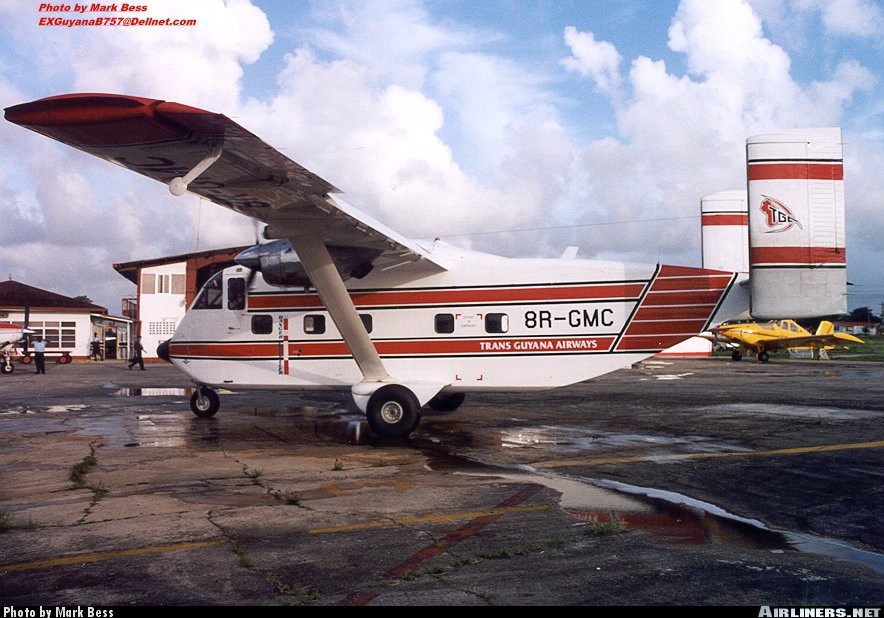
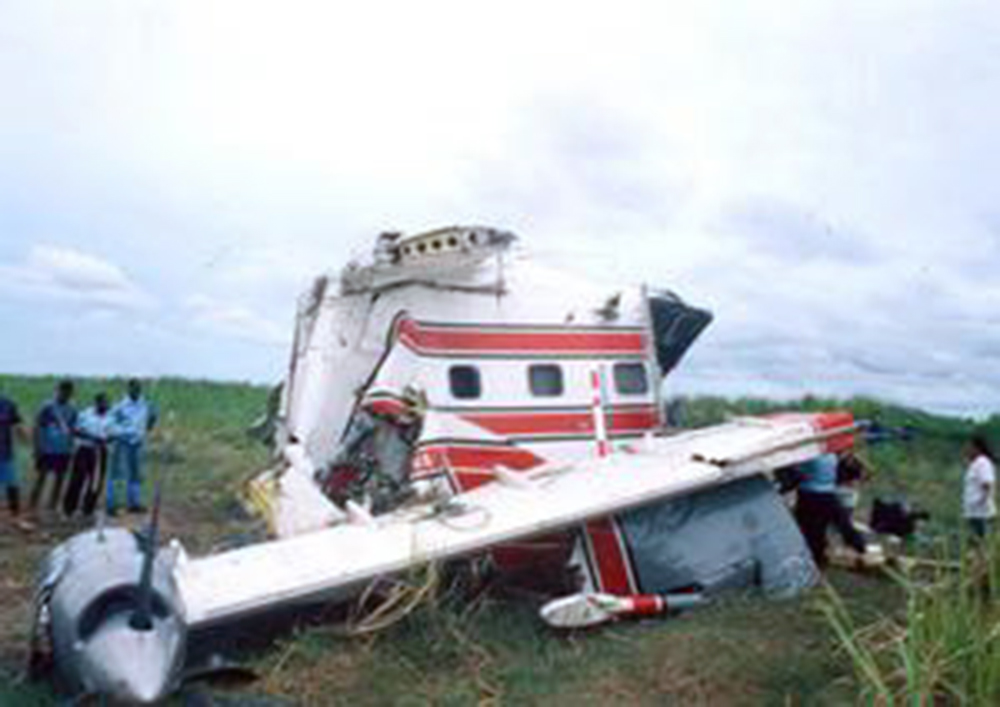
Crash of a Short SC.7 Skyvan 3 Variant 100 in Port Radium: 3 killed
Date & Time:
Oct 8, 2000 at 1520 LT
Registration:
C-FSDZ
Survivors:
No
Schedule:
Yellowknife – Kugluktuk – Port Radium – Yellowknife
MSN:
1953
YOM:
1977
Crew on board:
2
Crew fatalities:
Pax on board:
1
Pax fatalities:
Other fatalities:
Total fatalities:
3
Captain / Total hours on type:
1000.00
Copilot / Total hours on type:
100
Circumstances:
At 1108 mountain daylight time on 08 October 2000, the Summit Air Charter's Short Brothers SC-7 Skyvan, serial number SH1953, departed on a visual flight rules six-hour flight from Yellowknife, Northwest Territories, to Kugluktuk, Nunavut, to Port Radium, Northwest Territories, and back to Yellowknife. The flight plan indicated a one-hour stop in Kugluktuk, with an estimated time of arrival at Yellowknife of 1710. The pilot-in-command was the chief pilot of Summit Air Charters Ltd. A cargo handler, who was also a pilot, was in the co-pilot's seat, and there was one passenger. When the aircraft failed to arrive at Yellowknife, Search and Rescue (SAR) were alerted and a search was begun. At 2202 SAR personnel confirmed that the SAR satellite was picking up an emergency locator transmitter signal in the vicinity of Port Radium. SAR aircraft were directed to the signal location and found the signal source but were not able to see the wreckage because of fog and freezing rain. The wreckage was found at 1309 the following day. The aircraft had struck the top of steeply rising hills along the east shore of Great Bear Lake, approximately 2.9 nautical miles northeast of the Port Radium airstrip. The crash site is approximately 440 feet above the lake surface and 250 feet above the airstrip elevation (see Appendix A). The aircraft was destroyed, and the three persons on board were fatally injured.
Probable cause:
Findings as to Causes and Contributing Factors:
1. Although the pilot and the aircraft were certified for instrument flight, the pilot apparently continued to fly in accordance with visual flight rules after encountering marginal weather conditions and reduced visibility.
2. For undetermined reasons, the pilot descended below the elevation of the terrain surrounding the airstrip, resulting in a controlled-flight-into-terrain accident.
Finding as to Risk:
1. Given the pilot's flying time during the 30 days before the accident, the pilot=s performance might have been affected by fatigue.
1. Although the pilot and the aircraft were certified for instrument flight, the pilot apparently continued to fly in accordance with visual flight rules after encountering marginal weather conditions and reduced visibility.
2. For undetermined reasons, the pilot descended below the elevation of the terrain surrounding the airstrip, resulting in a controlled-flight-into-terrain accident.
Finding as to Risk:
1. Given the pilot's flying time during the 30 days before the accident, the pilot=s performance might have been affected by fatigue.
Final Report:
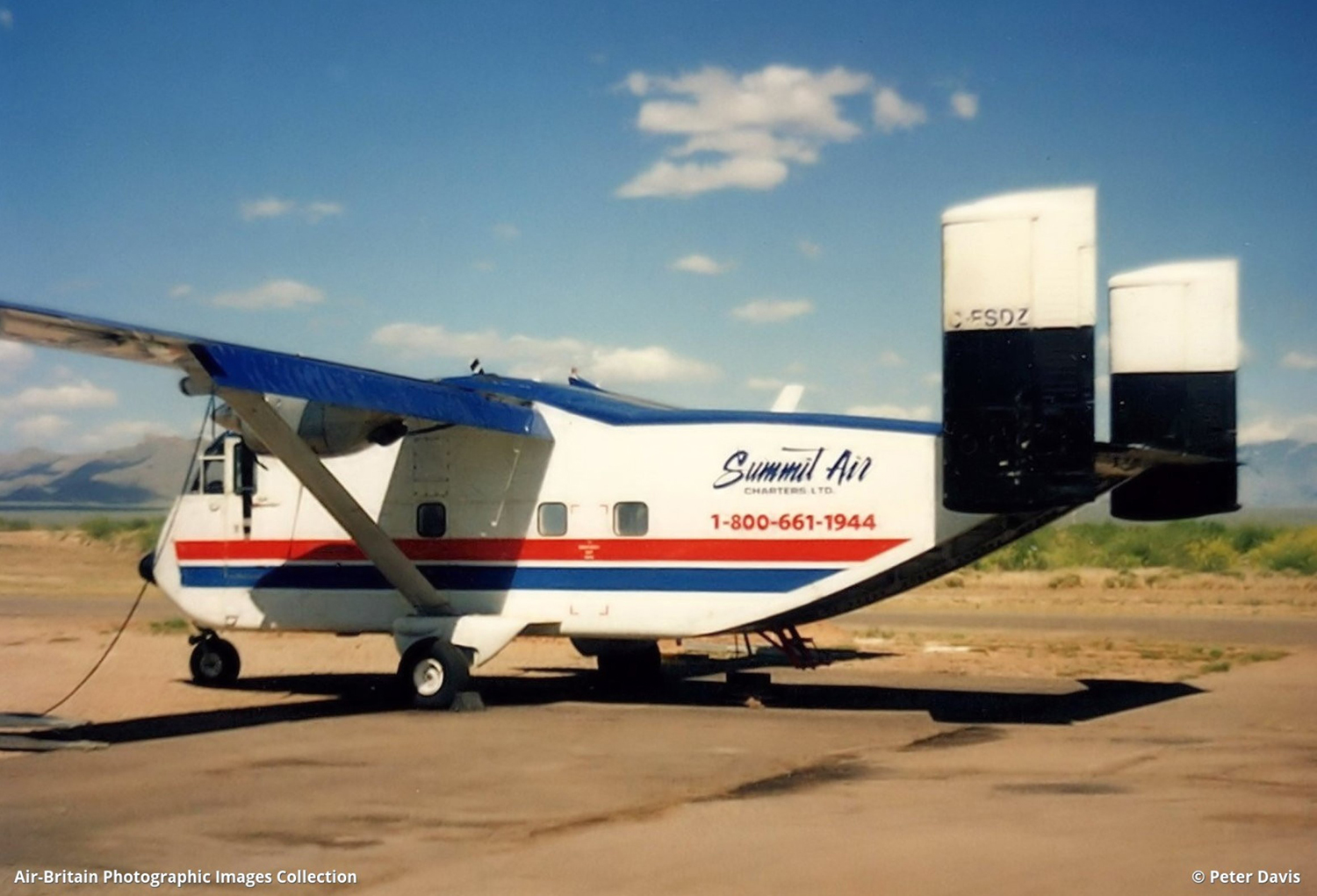
Crash of a Short SC.7 Skyvan 3 Variant 100 in Surkhet
Date & Time:
Aug 7, 1999 at 0635 LT
Registration:
RAN-19
Survivors:
Yes
MSN:
1884
YOM:
1970
Crew on board:
2
Crew fatalities:
Pax on board:
0
Pax fatalities:
Other fatalities:
Total fatalities:
0
Circumstances:
During the takeoff roll on runway 20, the aircraft started to skid. Halfway down, the crew decided to abandon the takeoff procedure but the aircraft was unable to stop within the remaining distance. It overran and came to rest in a ravine. Both pilots escaped uninjured and the aircraft was damaged beyond repair. Weather conditions were good at the time of the accident with an OAT of 18° C. and light wind. The Surkhet Airport runway 20/02 is grass and is 3,400 feet long. It was reported that at the time of the accident, the turf was quit high and wet due to the morning dew which was considered as a contributing factor.
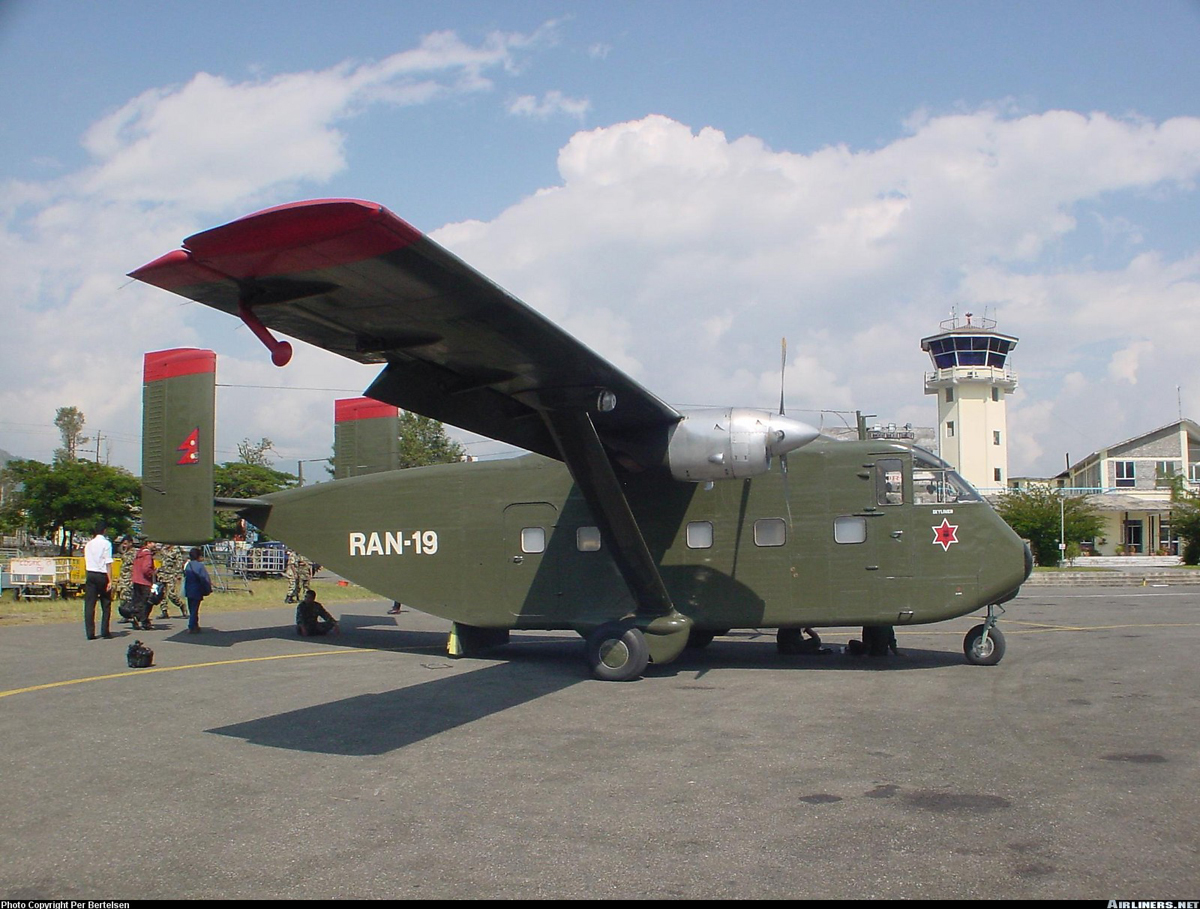
Crash of a Short SC.7 Skyvan 3M Variant 400 in Zell am See
Date & Time:
Oct 17, 1998 at 1502 LT
Registration:
OE-FDF
Survivors:
Yes
Schedule:
Zell am See - Zell am See
MSN:
1958
YOM:
1978
Crew on board:
2
Crew fatalities:
Pax on board:
19
Pax fatalities:
Other fatalities:
Total fatalities:
0
Aircraft flight hours:
6007
Aircraft flight cycles:
5409
Circumstances:
After takeoff from runway 25 at Zell am See Airport, the aircraft started to roll left and right. It banked right to an angle of 40° then stalled and crashed in an open field near the airport. All 21 occupants were rescued, among them eight were injured. The aircraft was damaged beyond repair after the undercarriage and both wings were torn off upon impact.
Probable cause:
The takeoff was initiated at an insufficient speed of 65 knots. It was determined that the friction locks of the throttles were not or not properly set prior to takeoff. Due to the vibration of the airplane, the throttles slowly retarded during the takeoff roll.
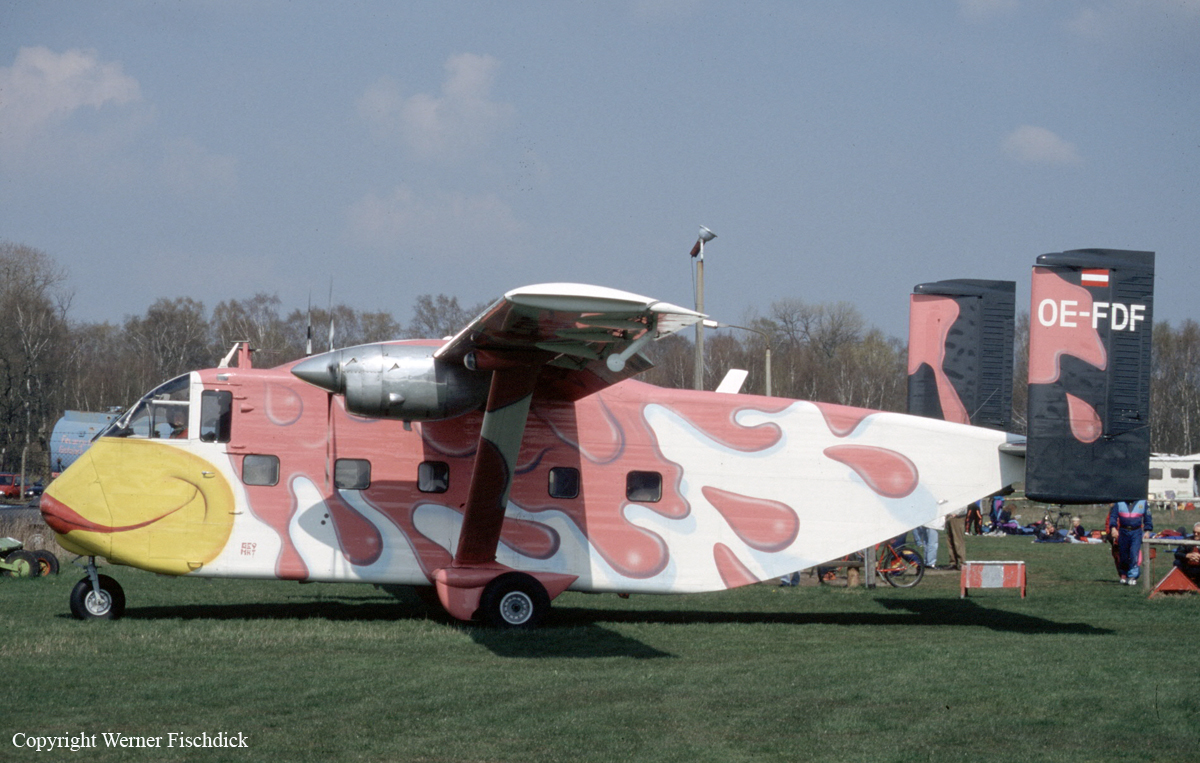
Crash of a Short SC.7 Skyvan 3 Variant 100 on Orizaba Peak: 4 killed
Date & Time:
Jul 23, 1998
Registration:
TP-214
Survivors:
No
Schedule:
Mexico City – Tuxtla Gutiérrez
MSN:
1946
YOM:
1976
Crew on board:
2
Crew fatalities:
Pax on board:
2
Pax fatalities:
Other fatalities:
Total fatalities:
4
Circumstances:
The twin engine aircraft departed Mexico City-Benito Juárez Airport on a liaison flight to Tuxtla Gutiérrez, carrying four people. While cruising at an altitude of 18,200 feet in good weather conditions on airway V22, the aircraft struck the slope of the Orizaba Peak. The wreckage was found at the altitude of 5,547 metres and all four occupants were killed. The aircraft had also the civil registration XC-UTQ.
Probable cause:
Controlled flight into terrain after the crew failed to follow the minimum safe altitude for the area. The minimum safe altitude for airway V22 is fixed at 16,000 feet except for the area of the Orizaba Peak where the minimum altitude is fixed at 21,000 feet. At the time of the accident, the visibility was estimated to be above 25 km with light mist. Thus, it is possible that the Orizaba Peak was shrouded in mist.




